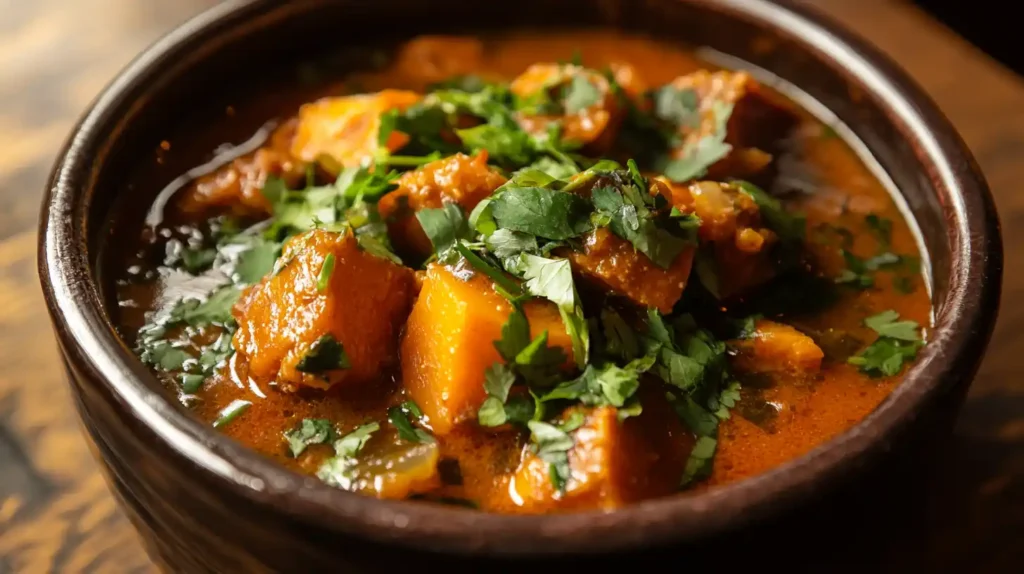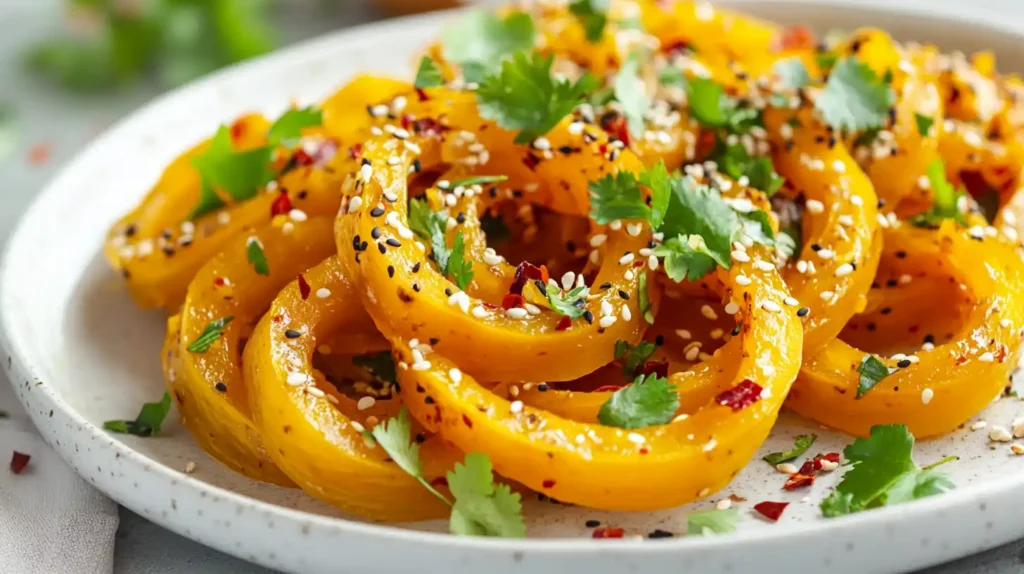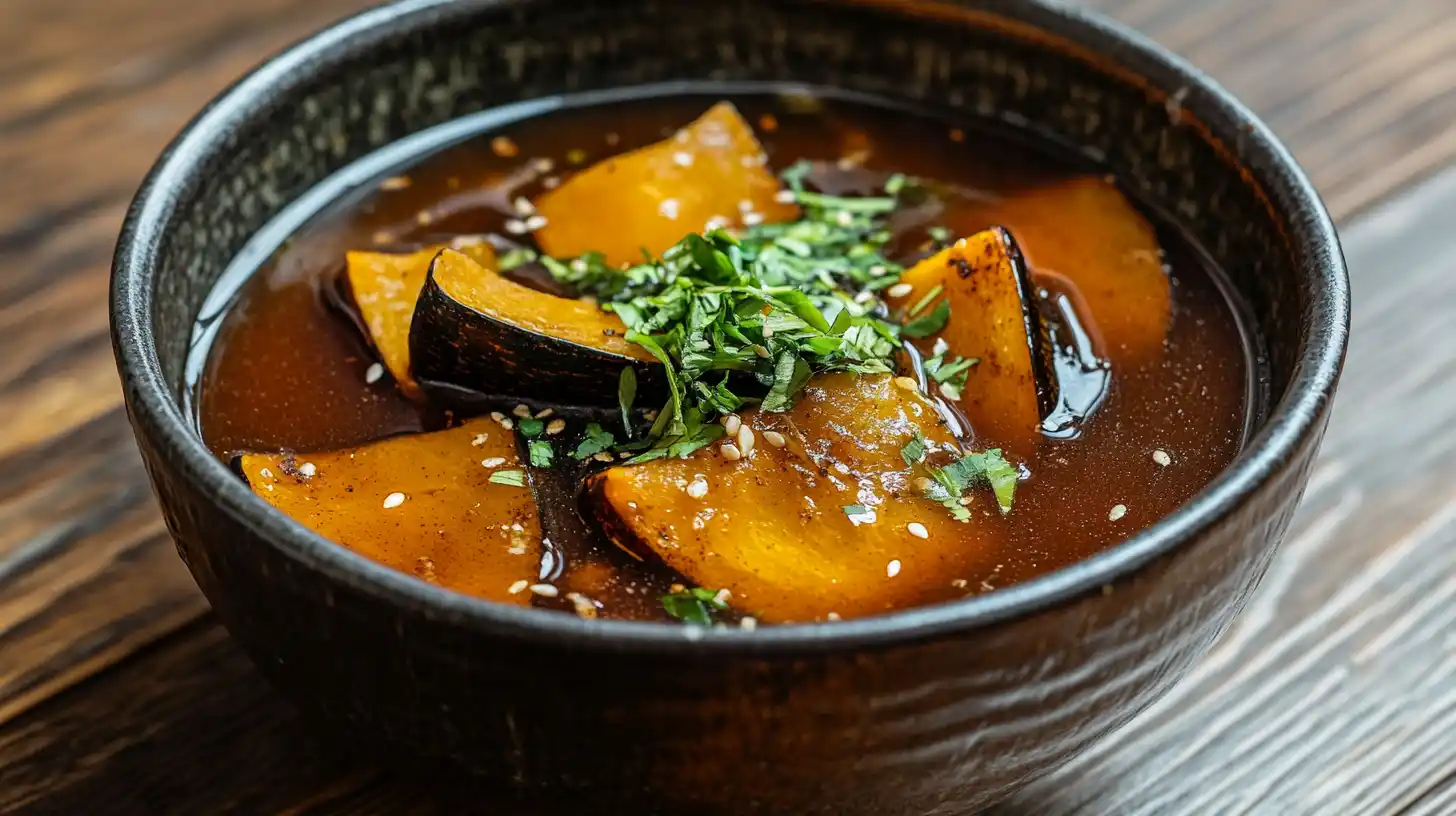Discover the delicious and nutrient-packed world of Chinese squash! From its rich vitamins and antioxidants to its versatility in the kitchen, this vibrant vegetable is a staple in Asian cuisine. Learn how to grow it, enjoy its health benefits, and explore mouthwatering recipes that bring out its natural flavors. Whether stir-fried, steamed, or added to soups, Chinese squash is a must-have ingredient for every food lover!
Table of contents
- What Is Chinese Squash? An Overview
- Historical and Cultural Relevance of Chinese Squash
- The Nutritional Powerhouse: Benefits of Chinese Squash
- Cultivating Chinese Squash at Home or on a Farm
- Chinese Squash in the Kitchen
- Challenges and Solutions with Chinese Squash
- Sustainability and Economics of This Remarkable Vegetable
- What to Serve with Chinese Squash
- Frequently Asked Questions
- Conclusion
What Is Chinese Squash? An Overview
This gourd has a pale green, waxy exterior and white, mildly flavored flesh. While it’s technically a fruit (since it contains seeds), it’s treated as a vegetable in cooking. It can grow quite large, often weighing up to 40 pounds, and its dense, watery flesh is a versatile ingredient in various dishes.
This unique produce is cherished for its ability to absorb flavors, making it perfect for soups, stews, and stir-fries. But what sets it apart from other squash varieties?
Well, it’s not just its size. This gourd has a thick, waxy coating that allows it to be stored for months without refrigeration talk about nature’s preservation magic!
Key Varieties of Chinese Squash and Their Characteristics
Chinese squash comes in several varieties, each offering unique textures and uses:
- Winter Melon: Known for its mild flavor and often used in soups.
- Fuzzy Melon (Mo Qua): A smaller, hairier version ideal for stir-fries.
- Bottle Gourd: With its curved shape, it’s great for stews and curries.
Each variety has its charm, but they all share a refreshing quality that shines in both traditional and modern dishes.
Historical and Cultural Relevance of Chinese Squash
The Origin Story: Chinese Squash in Ancient Times
This vegetable isn’t just a food; it’s a piece of history. Its origins trace back to ancient China, where it was cultivated as early as 2,000 years ago. Farmers valued it not only for its taste but also for its long shelf life, which made it a staple during harsh winters.
It wasn’t uncommon to see this vegetable depicted in traditional Chinese art, symbolizing longevity and abundance. And let’s not forget its role in ancient trade routes, where it was exchanged for spices and textiles, spreading its influence beyond Asia.
Chinese Squash in Traditional Festivals and Folklore
In Chinese folklore, this vegetable is often associated with protection and prosperity. During the Lunar New Year, it’s used in dishes meant to bring good fortune. Its seeds, which symbolize fertility, are also used in various rituals.
Medicinal Use of Chinese Squash in Ancient Remedies
This vegetable has been a go-to remedy in Traditional Chinese Medicine (TCM) for centuries. It’s believed to have cooling properties, making it perfect for treating fevers and heatstroke. Rich in water and fiber, it’s also used to promote digestion and detoxify the body.
The Nutritional Powerhouse: Benefits of Chinese Squash
Vitamins, Minerals, and Nutrients in Chinese Squash
Curious about what makes Chinese squash so healthy? It’s packed with essential nutrients while being incredibly low in calories. Here’s a snapshot of its nutritional profile:
| Nutrient | Amount per 100g |
|---|---|
| Calories | 13 kcal |
| Carbohydrates | 3 g |
| Dietary Fiber | 1 g |
| Vitamin C | 13% of Daily Value |
| Potassium | 150 mg |
| Magnesium | 10 mg |
Thanks to its high water content, it’s also an excellent hydrator, perfect for those hot summer days.
How Chinese Squash Supports a Healthy Lifestyle
It is more than just a pretty vegetable. Its benefits include:
- Weight Management: Low in calories and high in fiber, it keeps you full without packing on pounds.
- Hydration: With over 90% water content, it’s like drinking a glass of water with every bite.
- Heart Health: Rich in potassium, it helps regulate blood pressure.
- Skin Health: Its Vitamin C content supports collagen production, keeping your skin glowing.
Specific Diets That Benefit from Chinese Squash
Are you on a low-carb diet? Vegan? Following a keto lifestyle? This vegetable fits the bill for all these diets. It’s a versatile ingredient that adapts to any meal plan.

Cultivating Chinese Squash at Home or on a Farm
Choosing the Right Soil and Climate for Chinese Squash
Growing this vegetable is surprisingly easy. It thrives in warm climates with plenty of sunlight, though it can tolerate cooler conditions if necessary. The key is well-draining soil with a pH of 6 to 6.8.
Pro tip: Use organic compost to enrich the soil. Squash loves nutrients, and a healthy foundation means a bountiful harvest.
Essential Care Tips During the Growing Season
Want healthy, robust plants? Here are some tips:
- Water Deeply: These plants need consistent moisture, but avoid overwatering to prevent root rot.
- Support Growth: Use trellises or stakes to support the vines. This prevents the fruit from touching the ground and reduces pest issues.
- Fertilize Regularly: Opt for a balanced fertilizer every two weeks during the growing season.
Dealing with Common Pests and Diseases
Like all crops, Chinese squash isn’t immune to pests and diseases. However, simple preventive measures can make a big difference:
- Pests to Watch For: Aphids, squash bugs, and cucumber beetles. Use neem oil to keep them at bay.
- Diseases: Powdery mildew and root rot often affect plants. Maintain sufficient spacing to promote better airflow and reduce the likelihood of these diseases.
Proper Techniques for Harvesting and Storing Chinese Squash
Once the squash’s skin turns a waxy white or pale green, it’s ready to harvest. Use a sharp knife to cut it off the vine, leaving a bit of stem attached to prolong freshness. Store it in a cool, dry place it can last for months without refrigeration!

Chinese Squash in the Kitchen
Popular Chinese Dishes Featuring Chinese Squash
If there’s one thing this vegetable excels at, it’s adaptability in the kitchen. It has a mild, slightly sweet flavor that absorbs spices and broths like a sponge. This quality makes it a star in several traditional dishes:
- Winter Melon Soup: A light and nourishing soup often paired with pork or seafood, flavored with ginger and garlic.
- Stuffed Winter Melon Rings: Slices of squash are hollowed out, filled with ground pork or shrimp, and steamed to perfection.
- Braised Winter Melon: Cooked in a savory soy sauce and garlic mixture, it’s a comforting dish for cold evenings.
These recipes aren’t just delicious; they’re also steeped in cultural traditions, often served during festivals or family gatherings.

Unique and Creative Recipes with Chinese Squash
Chinese squash isn’t confined to traditional cuisine. It’s found a place in modern kitchens worldwide, inspiring creative dishes like:
- Chinese Squash Noodles: Spiralized squash serves as a low-carb pasta alternative. Toss it with sesame oil and soy sauce for a quick meal.
- Squash Smoothies: Blend the cooked squash with coconut milk, honey, and a dash of cinnamon for a unique dessert drink.
- Chinese Squash Curry: Add chunks of this versatile ingredient to a fragrant curry base for a fusion twist.
Recipe Highlight: Chinese Squash Stir-Fry
Here’s a quick and easy stir-fry recipe that anyone can whip up:
| Ingredient | Quantity |
|---|---|
| Chinese squash | 2 cups (sliced) |
| Garlic (minced) | 3 cloves |
| Soy sauce | 2 tbsp |
| Oyster sauce | 1 tbsp |
| Sesame oil | 1 tbsp |
| Chili flakes | 1 tsp |
| Spring onions | 2 (chopped) |
Instructions:
- Heat sesame oil in a pan. Add garlic and sauté until fragrant.
- Toss in the sliced vegetable and cook for 5-7 minutes.
- Add soy sauce, oyster sauce, and chili flakes, stirring well.
- Cook the squash until it becomes tender while still holding its shape.
- Garnish with spring onions and serve with steamed rice.
Challenges and Solutions with Chinese Squash
Troubleshooting Growth Problems in Chinese Squash Cultivation
Cultivating Chinese squash can be fulfilling, though it comes with its own set of challenges. Here’s how to overcome some common issues:
- Squash Failing to Produce Fruit: Poor pollination is usually the main cause. Hand-pollinate using a soft brush to transfer pollen between flowers.
- Yellowing Leaves: A sign of overwatering or nutrient deficiency. Review your watering routine and think about incorporating a well-balanced fertilizer.
- Pest Infestations: Use organic solutions like neem oil or companion planting to keep pests at bay.
Common Cooking Mistakes and How to Fix Them
Preparing Chinese squash is simple, but small mistakes can compromise its tender texture and subtle flavor. Here’s how to avoid them:
- Overcooking: Squash becomes mushy if overcooked. Aim for a tender but firm texture.
- Lack of seasoning Its delicate taste benefits from a boost of spices and aromatics such as garlic, ginger, or soy sauce.
- Improper Peeling: The tough outer skin can be challenging to remove. Use a sharp peeler and work slowly to avoid waste.
Sustainability and Economics of This Remarkable Vegetable
The Role of Chinese Squash in Sustainable Agriculture
This vegetable isn’t just good for you; it’s good for the planet. Its hardy nature means it requires fewer resources like water and pesticides compared to other crops. Plus, its long shelf life reduces food waste a win-win for farmers and the environment.
Farmers are increasingly adopting sustainable practices like crop rotation and organic fertilization to grow this crop. These methods not only improve soil health but also ensure a steady supply of this versatile vegetable.
The Economic Impact of Chinese Squash on Local and Global Markets
Many Asian countries have turned this vegetable into a key export crop, boosting their local economies. It’s also gaining popularity in Western markets as people discover its versatility and health benefits.
Reducing Food Waste with This Versatile Vegetable
One of the most remarkable things about this vegetable is how every part can be used. The flesh is a culinary staple, the seeds can be roasted as a snack, and even the skin can be composted to enrich soil.
What to Serve with Chinese Squash
- Sticky Chicken Recipe: A rich, flavorful pairing for squash.
- Beef Heart Recipe: A nutrient-dense option for a unique pairing.
- Shrimp Quesadilla: A crispy, cheesy contrast to soft squash.
- Mini Tacos: A fun, crunchy side that complements well.
Frequently Asked Questions
What Are the Best Ways to Store Chinese Squash for Longevity?
Keep it in a cool, dry place. The waxy coating acts as a natural preservative, allowing it to last for months.
Can You Eat Chinese Squash Raw, or Does It Require Cooking?
While it’s safe to eat raw, its mild flavor shines best when cooked.
How Does This Vegetable Differ from Western Squash?
This vegetable is less sweet, larger, and has a longer shelf life compared to most Western varieties.
Are There Any Allergies or Risks Associated with Chinese Squash?
It’s rare, but some people may experience mild digestive discomfort. Always cook it thoroughly to reduce any potential risks.
Conclusion
This vegetable is a treasure trove of flavor, nutrition, and history. Whether you’re growing it in your backyard, cooking it into hearty dishes, or exploring its cultural significance, it’s clear that this versatile ingredient deserves more recognition.
So, the next time you’re at the market, pick one up and give it a try. You’ll not only enjoy its health benefits but also connect with a tradition that spans centuries.

Chinese Squash Stir-Fry
Equipment
- Wok
- Knife
- Cutting Board
Ingredients
Stir-Fry Ingredients
- 2 cups Chinese squash sliced
- 3 cloves garlic minced
- 2 tbsp soy sauce
- 1 tbsp oyster sauce
- 1 tbsp sesame oil
- 1 tsp chili flakes optional
- 2 spring onions chopped
Instructions
- Heat sesame oil in a wok over medium heat.
- Add minced garlic and sauté until fragrant.
- Add sliced Chinese squash and stir-fry for 5-7 minutes.
- Pour in soy sauce, oyster sauce, and chili flakes. Stir well to coat the squash evenly.
- Continue cooking until the squash is tender but still firm.
- Garnish with chopped spring onions and serve hot with steamed rice.
